Aim:
This study aims to discover an alternative precursor with abundant source and low cost for multicolor graphene quantum dots (GQDs) preparation and application.
Methods:
In the current study, anthracite-derived multicolor GQDs were prepared at different reaction temperatures (100°–150°C), referring to the GQDs 100, GQDs 120, GQDs 130, and GQDs 150.
Results:
The GQDs 100, GQDs 120, GQDs 130, and GQDs 150 solutions were found to be orange-red, yellow-green, green, and blue under 365 nm excitation UV (ultraviolet) lamp, respectively. The X-ray photoelectron spectroscopy (XPS) data suggests high temperature intensifies oxidation of the amorphous sp3 carbon, resulting in GQDs with higher crystalline structure (Csp2). Compared with the GQDs 100 and GQDs 120, the GQDs 130 and GQDs 150 showed much better biocompatibility, which may attribute to their higher Csp2 composition and smaller size.
Conclusions:
The results suggest that GQDs 130 and GQDs 150 are ideal candidates for nanomedicine applications, e.g., drug/gene delivery and bio-imaging, etc.
Hongyu Pan ... Kai Yu
Aim:
This study aims to discover an alternative precursor with abundant source and low cost for multicolor graphene quantum dots (GQDs) preparation and application.
Methods:
In the current study, anthracite-derived multicolor GQDs were prepared at different reaction temperatures (100°–150°C), referring to the GQDs 100, GQDs 120, GQDs 130, and GQDs 150.
Results:
The GQDs 100, GQDs 120, GQDs 130, and GQDs 150 solutions were found to be orange-red, yellow-green, green, and blue under 365 nm excitation UV (ultraviolet) lamp, respectively. The X-ray photoelectron spectroscopy (XPS) data suggests high temperature intensifies oxidation of the amorphous sp3 carbon, resulting in GQDs with higher crystalline structure (Csp2). Compared with the GQDs 100 and GQDs 120, the GQDs 130 and GQDs 150 showed much better biocompatibility, which may attribute to their higher Csp2 composition and smaller size.
Conclusions:
The results suggest that GQDs 130 and GQDs 150 are ideal candidates for nanomedicine applications, e.g., drug/gene delivery and bio-imaging, etc.
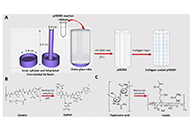 Fabrication and characterization of pHEMA hydrogel conduit containing GelMA-HaMA IPN for peripheral nerve regenerationOpen AccessOriginal ArticleAim: Small defects after any injury to the periperal nerves results in self-regeneration. However, for larger defects, suturing or grafting are necessary, which may have limitations. Thus, resear [...] Read more.Damla Arslantunali Sahin ... Vasif HasirciPublished: February 26, 2024 Explor BioMat-X. 2024;1:34–57
Fabrication and characterization of pHEMA hydrogel conduit containing GelMA-HaMA IPN for peripheral nerve regenerationOpen AccessOriginal ArticleAim: Small defects after any injury to the periperal nerves results in self-regeneration. However, for larger defects, suturing or grafting are necessary, which may have limitations. Thus, resear [...] Read more.Damla Arslantunali Sahin ... Vasif HasirciPublished: February 26, 2024 Explor BioMat-X. 2024;1:34–57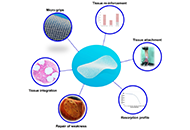 Journey of medical device development from the bench to the bedside—four real-life examples of commercial biomaterials developmentOpen AccessReviewTranslating biomaterials research into clinical products is a multidisciplinary yet rewarding journey. It should primarily aim to improve patient treatment and clinical outcomes by addressing unmet [...] Read more.Yves Bayon ... Didier LetourneurPublished: January 16, 2024 Explor BioMat-X. 2024;1:23–33
Journey of medical device development from the bench to the bedside—four real-life examples of commercial biomaterials developmentOpen AccessReviewTranslating biomaterials research into clinical products is a multidisciplinary yet rewarding journey. It should primarily aim to improve patient treatment and clinical outcomes by addressing unmet [...] Read more.Yves Bayon ... Didier LetourneurPublished: January 16, 2024 Explor BioMat-X. 2024;1:23–33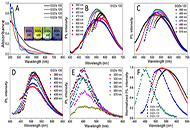 Fabrication of anthracite-derived multicolor graphene quantum dots for their potential application in nanomedicineOpen AccessOriginal ArticleAim: This study aims to discover an alternative precursor with abundant source and low cost for multicolor graphene quantum dots (GQDs) preparation and application. Methods: In the current [...] Read more.Hongyu Pan ... Kai YuPublished: January 01, 2024 Explor BioMat-X. 2024;1:14–22
Fabrication of anthracite-derived multicolor graphene quantum dots for their potential application in nanomedicineOpen AccessOriginal ArticleAim: This study aims to discover an alternative precursor with abundant source and low cost for multicolor graphene quantum dots (GQDs) preparation and application. Methods: In the current [...] Read more.Hongyu Pan ... Kai YuPublished: January 01, 2024 Explor BioMat-X. 2024;1:14–22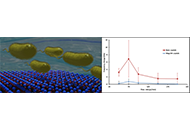 Interaction of Pseudomonas aeruginosa with surface-modified silica studied by ultra-high frequency acoustic wave biosensorOpen AccessOriginal ArticleAim: This study aimed to examine the amount of surface non-specific adsorption, or fouling, observed by Pseudomonas aeruginosa (P. aeruginosa) on a quartz crystal based acoustic wave biosensor un [...] Read more.Brian De La Franier, Michael ThompsonPublished: January 01, 2024 Explor BioMat-X. 2024;1:5–13
Interaction of Pseudomonas aeruginosa with surface-modified silica studied by ultra-high frequency acoustic wave biosensorOpen AccessOriginal ArticleAim: This study aimed to examine the amount of surface non-specific adsorption, or fouling, observed by Pseudomonas aeruginosa (P. aeruginosa) on a quartz crystal based acoustic wave biosensor un [...] Read more.Brian De La Franier, Michael ThompsonPublished: January 01, 2024 Explor BioMat-X. 2024;1:5–13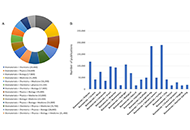 Exploration of biomaterials: a multidisciplinary ventureOpen AccessEditorialMaryam TabrizianPublished: January 01, 2024 Explor BioMat-X. 2024;1:1–4
Exploration of biomaterials: a multidisciplinary ventureOpen AccessEditorialMaryam TabrizianPublished: January 01, 2024 Explor BioMat-X. 2024;1:1–4